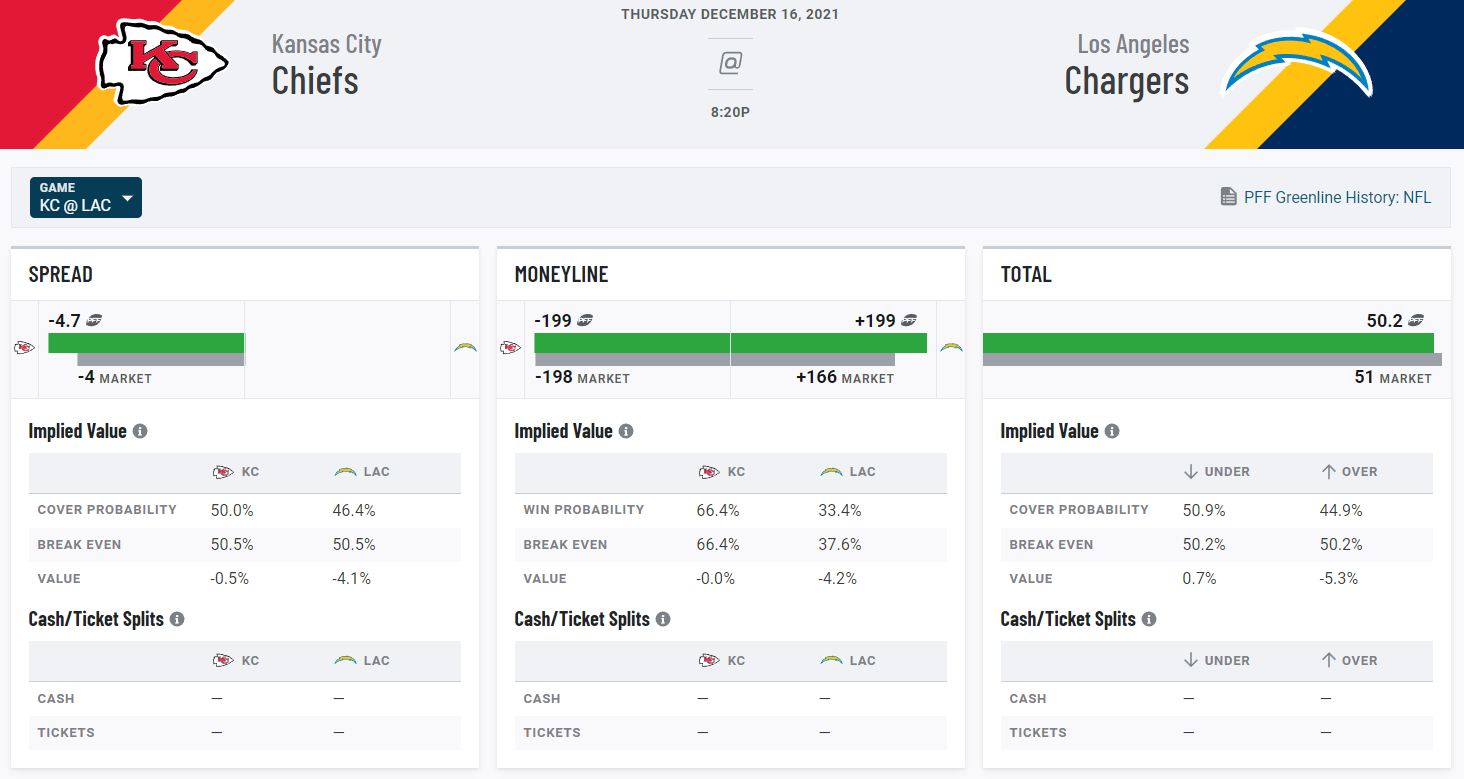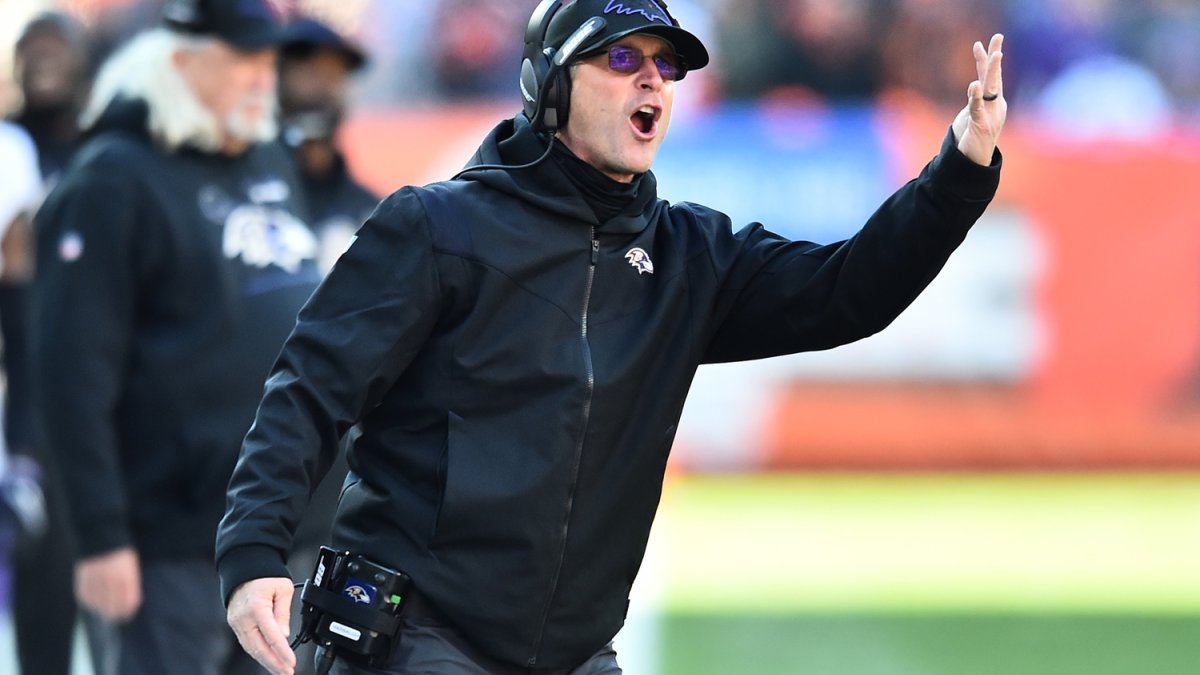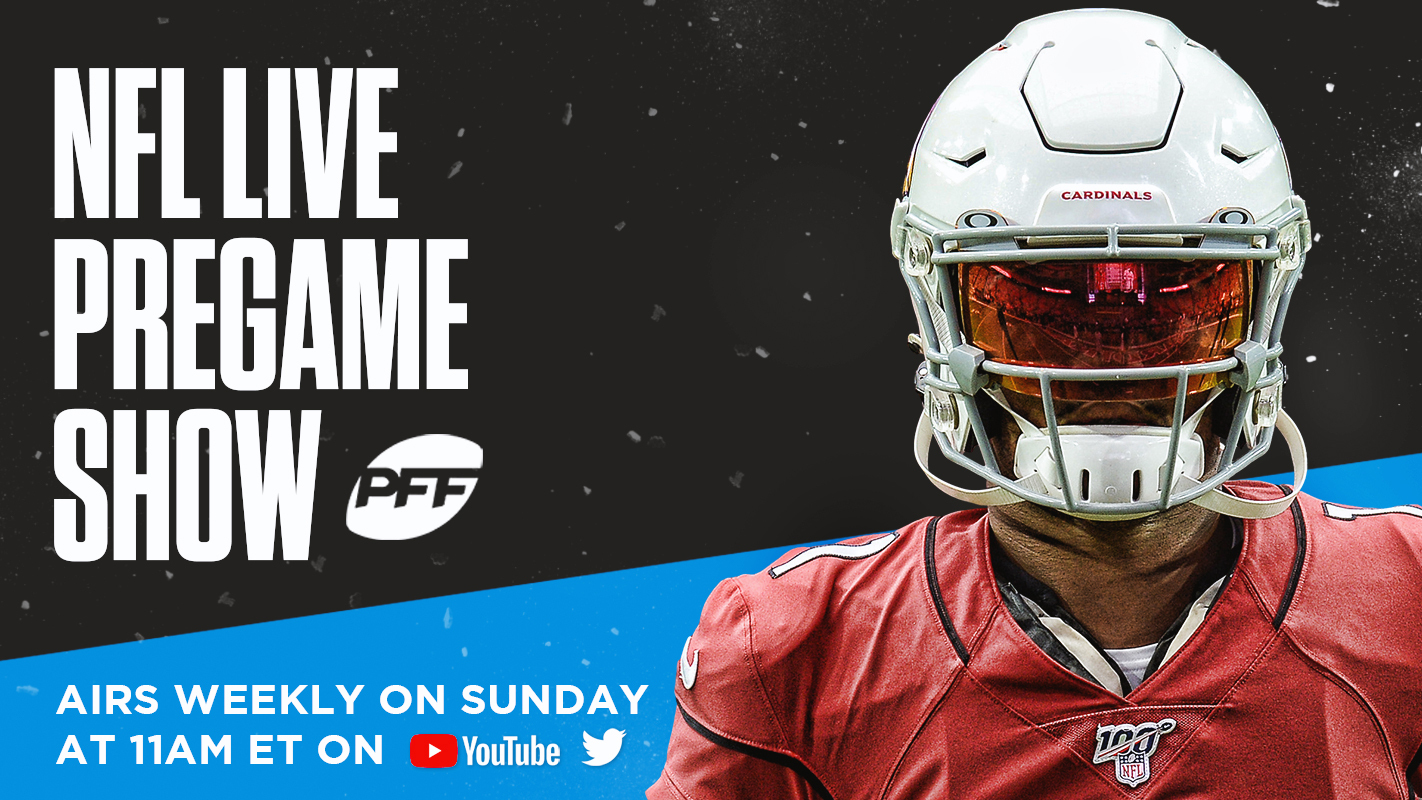The 2021 NFL season has given us quite a bit to work with. Scoring is down, in large part because defenses have become a lot smarter, making us re-evaluate our assumptions about winning strategies. Teams are also going for fourth downs more often, which is in line with what many in the analytics community (not just PFF) have advocated for. Teams are even going for two-point conversions in more unconventional ways, and that seems to have caused some debate.
Click here for more PFF tools:
Rankings & Projections | WR/CB Matchup Chart | NFL & NCAA Betting Dashboards | NFL Player Props tool | NFL & NCAA Power Rankings
For example, in their Week 14 loss to the Cleveland Browns, the Baltimore Ravens — down by nine points with just under nine minutes to play — attempted a two-point conversion following a Latavius Murray touchdown that cut the lead to 24-15. The try was unsuccessful, meaning that a subsequent touchdown by tight end Mark Andrews was not enough to get the Ravens within a conversion of tying the score.
Commentators, specifically CBS' Phil Simms, were incredulous about the choice, demanding that someone should have to answer for such a call.
This is the worst discussion to ever take place on television. pic.twitter.com/okVW4LSHGw
— Justin Russo (@FlyByKnite) December 12, 2021
Ravens head coach John Harbaugh, who for my money might be the best coach in the NFL at this point, did give an answer that was more than satisfactory, but one gander into the comments section would seem to suggest that the message didn’t quite get through:
Coach Harbaugh on the decision to go for two: pic.twitter.com/KWJPoAhldW
— Baltimore Ravens (@Ravens) December 12, 2021
So, with all of that in mind, let's go through a few reasons why the Ravens made the correct choice, both from a mathematical and a common-sense standpoint.
The Math
The end of the discussion should simply be: “Which decision makes the Ravens more likely to win?” And we can estimate that with modern win probability models. Here were the Ravens' win probabilities, assuming a deep kick after the conversion attempt (and with Tyler Huntley as their quarterback):
- Down 24-15 (missed 2PAT or missed PAT): 6.8%
- Down 24-16 (converted PAT): 7.2%
- Down 24-17 (converted 2PAT): 10.3%
Justin Tucker is basically automatic on extra points, so for the sake of the argument, let’s assume he’d make the conversion 100% of the time. The Ravens would then need their expected conversion rate on two-point conversions (let’s call this X for old times’ sake) to satisfy this inequality:
7.2% < 10.3%X + 6.8%(1 – X)
Solving for X yields 0.11. So the Ravens would need to be confident they could convert such a two-point conversion about 11% of the time for this move to make sense. Even having Huntley as their quarterback, this is pretty asymmetrical. For the record, this is not the same for every team in every situation, but as was also the case Thursday night in Minnesota with the Pittsburgh Steelers trailing 29-20, it’s usually a pretty big slam dunk (the Steelers needed to convert 38% of the time for it to make sense).
The Common Sense
The first thing to acknowledge when going down this road is what the incentives are when people push for an incorrect idea. Just like in this article about running the ball, people are generally not intentionally doing the wrong thing, so there is some conditioning going on that has them default to the activity that is not plus-expected value.
When it comes to football, it’s important to realize that the way we consume the game (through broadcasts) influences our ability to understand it. This comes into play in the coverage versus pass rush debate via camera angles, but also in the subtle nudges that color commenters and play-by-play guys have in how they discuss various decisions. For a broadcast, there is more value in a “one-score game” than there is in a game separated by nine points or more.
https://twitter.com/PFF_Eric/status/1469298551591256069?s=20
The longer the perceived suspense — which is correlated with the likelihood of the two teams winning, but not perfectly — the better. So when a team lines up to go for a two-point conversion while down nine, there is going to be immediate resistance to a 50-50 chance of losing a significant chunk of the audience should the attempt fail.
The same thing is true when a trailing team goes for a fourth down in their own end early-ish in the game. When they make it (as the Los Angeles Chargers did against the Browns in Week 5), it can really add a lot of juice to a game. When they miss it (as the Chargers did against the Ravens in Week 6) and the game gets out of control, the lawnmowers get started a little bit earlier on a Sunday afternoon, which is not what broadcasts want.
So, now that we know where some of the misunderstandings come from, let’s lay out the reasoning behind going for two on the first score instead of the second. I discussed this on NFL.com last year referencing a game in which the Dallas Cowboys beat the Atlanta Falcons, but it can pretty easily be summarized as:
The results of the two-point conversion are unknown until you attempt it, and the earlier you can erase that uncertainty, the better.
If the Ravens had waited to try the two-point conversion until their last touchdown against the Browns, the likelihood of a conversion would have been largely the same as if they attempted it after the penultimate touchdown. The advantage of knowing the outcome after the first touchdown is that, in the quest for the second touchdown, you already know if you need to kick the onside attempt after (which likely requires some time left to be successful) — or if you can bleed the clock and play for overtime after tying it with a much more successful point-after try.
When the trailing team is down eight points, it creates an awkward situation. Consider the following scenarios:
- The trailing team does not sufficiently drain the clock
- Two-point conversion is good: You left too much time for your opponent to answer (generally not good). See, for example, the Ravens' come-from-behind win against the Indianapolis Colts in Week 5 this season, where they left 39 seconds on the clock in a drive where they needed eight points and almost lost as a result.
- Two-point conversion is not good: You have enough time to kick an onside kick or play defense and get the ball back for a go-ahead field goal (generally a decent outcome considering the results of the conversion attempt).
- The trailing team drains the clock sufficiently
- Two-point conversion is good: Overtime is the best possible outcome (generally decent given the circumstances).
- Two-point conversion is not good: The game is over.
In all four of these situations, the outcome of the two-point conversion is very valuable beforehand. Additionally, there are other positive externalities of this approach. For example:
- If the first two-point conversion is successful, and the trailing team has sufficiently drained the clock before the second touchdown, then a two-point conversion attempt to win the game is actually possible, if one wants to opt into it.
- If the first two-point conversion attempt is not successful, a touchdown by the opponent afterward extends the lead from nine to 16, which is still reachable by two scores (see: Steelers versus Vikings in Week 14).
Notice, as mentioned above, an impartial broadcast doesn’t really care about which of the four outcomes above happens, because the game is winnable for both of the two teams until the end of the game, which is compelling from a viewing standpoint.

Summary
The Ravens continue to make the right choices in many instances, and it’s encouraging that their head coach is not just plugged into what those right choices are, but can also go through the apologetics for them. As more teams find it acceptable to make correct choices, it’s also important for the media and fans to know the whys so that we can continue to advance the game to the next set of insights, as opposed to constantly arguing about solved problems.





 © 2025 PFF - all rights reserved.
© 2025 PFF - all rights reserved.